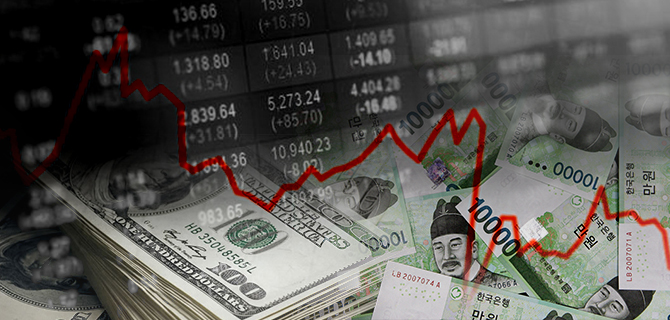
이 누리집은 대한민국 공식 전자정부 누리집입니다.

Biz News Korea(Eng)
- Collected
- 2019.07.29
- Distributed
- 2019.07.30
- Source
- Go Direct

South Korea’s 20-year government bond yield fell below that of the 10-year bond for the first time in four months in a sign of deepening pessimism about the export-reliant country’s economy grappling with multiple headwinds on the trade front.
According to Korea Financial Investment Association on Friday, the 20-year government bond yield lost 2.6 basis points on Friday from the previous day to close at 1.406 percent, 20 basis points lower than the 10-year yield of 1.426 percent that fell 0.5 basis points.
It was the first time in four months for the 20-year government bond yield to dip below that of the 10-year note after March 22 when the 10-year yield was 5 basis points higher than that of 20-year note.
Under normal economic conditions, longer-term bonds typically offer higher yields than short-term ones to compensate for the risk of inflation and changing interest rates. As the economic outlook turns gloomier, investors generally shift their interest to longer-term debts to secure the current high yields before interest rates scale down. Such strong demand for longer-term bonds drives up their prices and lowers their yields, as yields move in the opposite direction to bond prices.
The latest inversion in the yields between 10- and 20-year notes suggested that investors have turned more pessimistic about the Korean economy than before, market analysts said.
On top of a slew of economic data indicating the sluggish growth in the Korean economy and the ongoing trade war between the country’s two largest trade partners the United States and China, Seoul’s deepening diplomatic and trade disputes with Tokyo have added woes to the export-reliant Korean economy. Earlier this month, the Japanese government decided to curb exports of three key high-tech materials necessary to produce Korea’s two mainstay export items – semiconductors and displays.
An inverted yield curve, a rare phenomenon in which the yields on short-term bonds exceed those on longer bonds, has historically preceded an economic recession and has often led to rate cuts.
Amid growing concerns over the country’s economy, long-term Korean bond yields also continued falling although their U.S. peers’ yields have risen.
The yield on U.S. benchmark 10-year treasury notes rose 2.6 basis points from a day earlier to 2.078 percent on Thursday (local time). The U.S. treasury bonds’ yields have remained relatively higher than their global peers because the latest data have indicated the U.S. economy continues to grow steadily despite growing expectations that the Federal Reserve would cut rates at its July meeting.
The most liquid three-year Korean treasury bond yield also fell below 1.3 percent during the session on Friday, about 0.2 percentage points lower than the key interest rate set by the Bank of Korea at 1.5 percent, another sign suggesting that bond investors are betting on more rate cuts even after the central bank surprisingly cut the policy rate by 0.25 percentage point from 1.75 percent on July 18 in a preemptive move to stimulate the economy.
By Chung Hee-young and Lee Eun-joo
[ⓒ Pulse by Maeil Business News Korea & mk.co.kr, All rights reserved]









